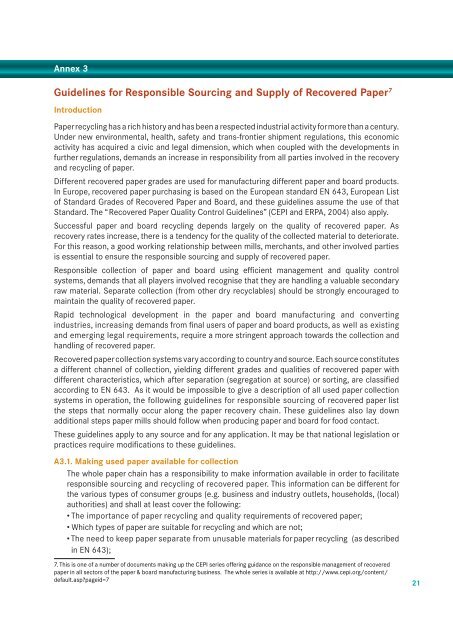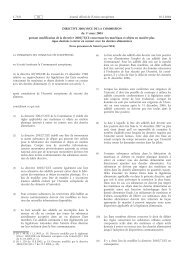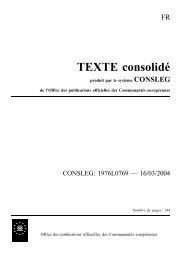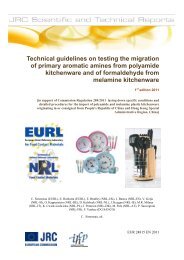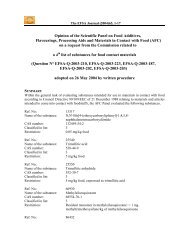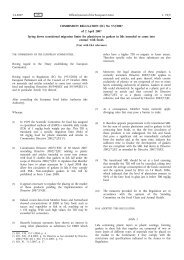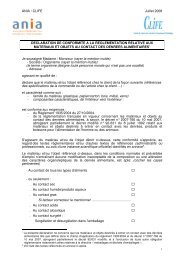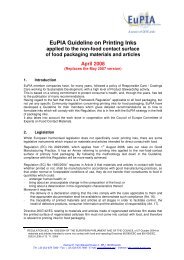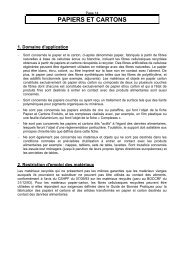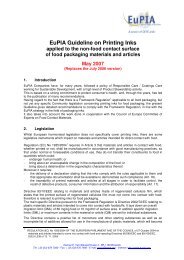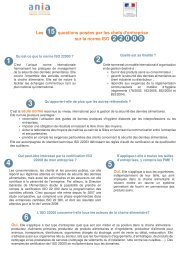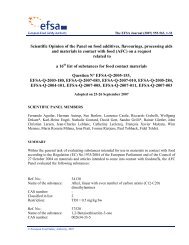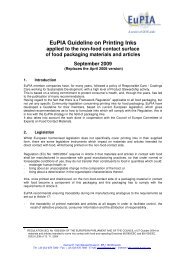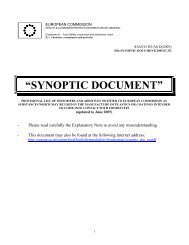Good Manufacturing Practice for the Manufacture of Paper - CEPI ...
Good Manufacturing Practice for the Manufacture of Paper - CEPI ...
Good Manufacturing Practice for the Manufacture of Paper - CEPI ...
You also want an ePaper? Increase the reach of your titles
YUMPU automatically turns print PDFs into web optimized ePapers that Google loves.
Annex 3<br />
Guidelines <strong>for</strong> Responsible Sourcing and Supply <strong>of</strong> Recovered <strong>Paper</strong> 7<br />
Introduction<br />
<strong>Paper</strong> recycling has a rich history and has been a respected industrial activity <strong>for</strong> more than a century.<br />
Under new environmental, health, safety and trans-frontier shipment regulations, this economic<br />
activity has acquired a civic and legal dimension, which when coupled with <strong>the</strong> developments in<br />
fur<strong>the</strong>r regulations, demands an increase in responsibility from all parties involved in <strong>the</strong> recovery<br />
and recycling <strong>of</strong> paper.<br />
Different recovered paper grades are used <strong>for</strong> manufacturing different paper and board products.<br />
In Europe, recovered paper purchasing is based on <strong>the</strong> European standard EN 643, European List<br />
<strong>of</strong> Standard Grades <strong>of</strong> Recovered <strong>Paper</strong> and Board, and <strong>the</strong>se guidelines assume <strong>the</strong> use <strong>of</strong> that<br />
Standard. The “Recovered <strong>Paper</strong> Quality Control Guidelines” (<strong>CEPI</strong> and ERPA, 2004) also apply.<br />
Successful paper and board recycling depends largely on <strong>the</strong> quality <strong>of</strong> recovered paper. As<br />
recovery rates increase, <strong>the</strong>re is a tendency <strong>for</strong> <strong>the</strong> quality <strong>of</strong> <strong>the</strong> collected material to deteriorate.<br />
For this reason, a good working relationship between mills, merchants, and o<strong>the</strong>r involved parties<br />
is essential to ensure <strong>the</strong> responsible sourcing and supply <strong>of</strong> recovered paper.<br />
Responsible collection <strong>of</strong> paper and board using efficient management and quality control<br />
systems, demands that all players involved recognise that <strong>the</strong>y are handling a valuable secondary<br />
raw material. Separate collection (from o<strong>the</strong>r dry recyclables) should be strongly encouraged to<br />
maintain <strong>the</strong> quality <strong>of</strong> recovered paper.<br />
Rapid technological development in <strong>the</strong> paper and board manufacturing and converting<br />
industries, increasing demands from final users <strong>of</strong> paper and board products, as well as existing<br />
and emerging legal requirements, require a more stringent approach towards <strong>the</strong> collection and<br />
handling <strong>of</strong> recovered paper.<br />
Recovered paper collection systems vary according to country and source. Each source constitutes<br />
a different channel <strong>of</strong> collection, yielding different grades and qualities <strong>of</strong> recovered paper with<br />
different characteristics, which after separation (segregation at source) or sorting, are classified<br />
according to EN 643. As it would be impossible to give a description <strong>of</strong> all used paper collection<br />
systems in operation, <strong>the</strong> following guidelines <strong>for</strong> responsible sourcing <strong>of</strong> recovered paper list<br />
<strong>the</strong> steps that normally occur along <strong>the</strong> paper recovery chain. These guidelines also lay down<br />
additional steps paper mills should follow when producing paper and board <strong>for</strong> food contact.<br />
These guidelines apply to any source and <strong>for</strong> any application. It may be that national legislation or<br />
practices require modifications to <strong>the</strong>se guidelines.<br />
A3.1. Making used paper available <strong>for</strong> collection<br />
The whole paper chain has a responsibility to make in<strong>for</strong>mation available in order to facilitate<br />
responsible sourcing and recycling <strong>of</strong> recovered paper. This in<strong>for</strong>mation can be different <strong>for</strong><br />
<strong>the</strong> various types <strong>of</strong> consumer groups (e.g. business and industry outlets, households, (local)<br />
authorities) and shall at least cover <strong>the</strong> following:<br />
• The importance <strong>of</strong> paper recycling and quality requirements <strong>of</strong> recovered paper;<br />
• Which types <strong>of</strong> paper are suitable <strong>for</strong> recycling and which are not;<br />
• The need to keep paper separate from unusable materials <strong>for</strong> paper recycling (as described<br />
in EN 643);<br />
7. This is one <strong>of</strong> a number <strong>of</strong> documents making up <strong>the</strong> <strong>CEPI</strong> series <strong>of</strong>fering guidance on <strong>the</strong> responsible management <strong>of</strong> recovered<br />
paper in all sectors <strong>of</strong> <strong>the</strong> paper & board manufacturing business. The whole series is available at http://www.cepi.org/content/<br />
default.asp?pageid=7<br />
21


